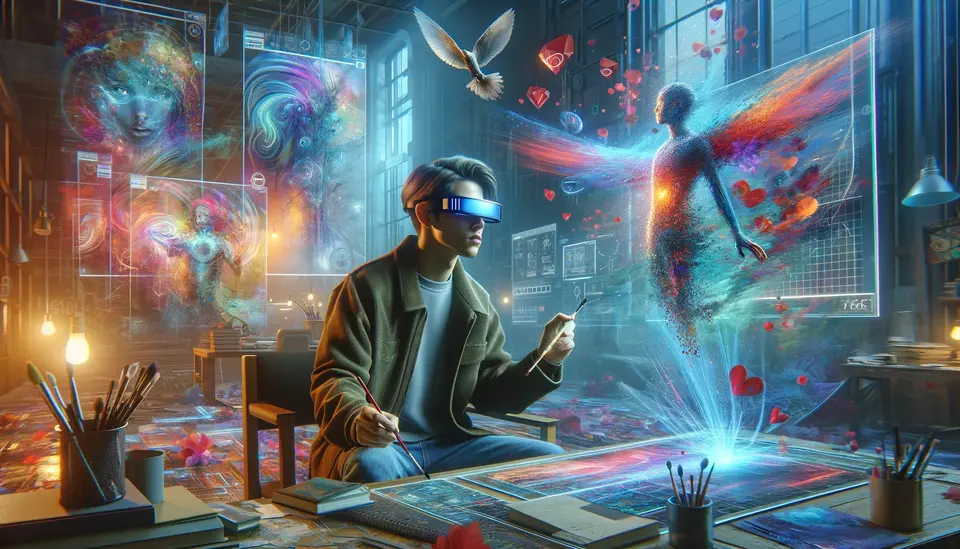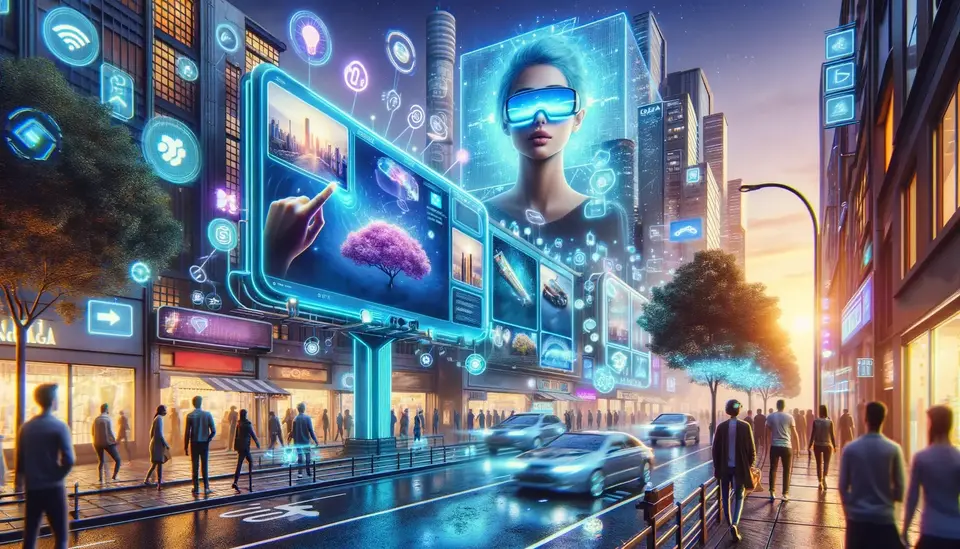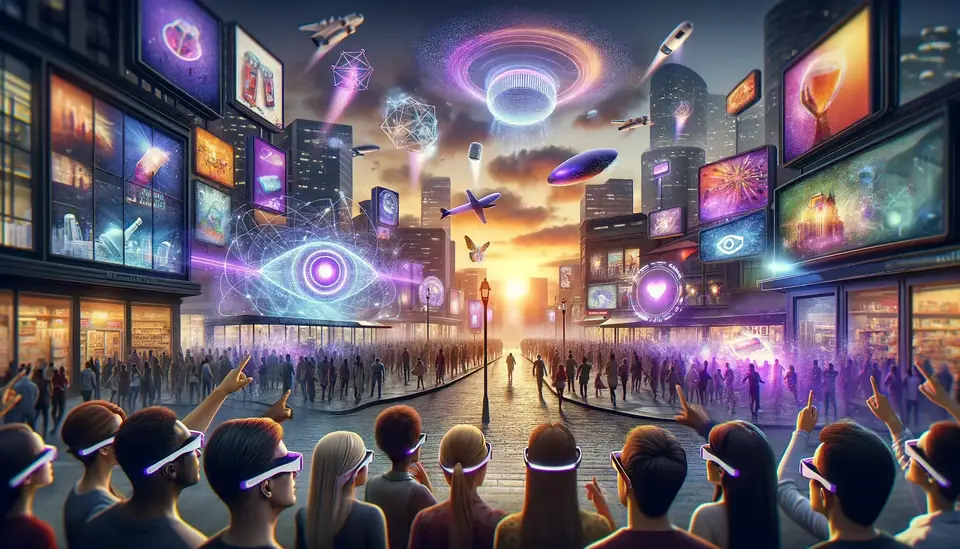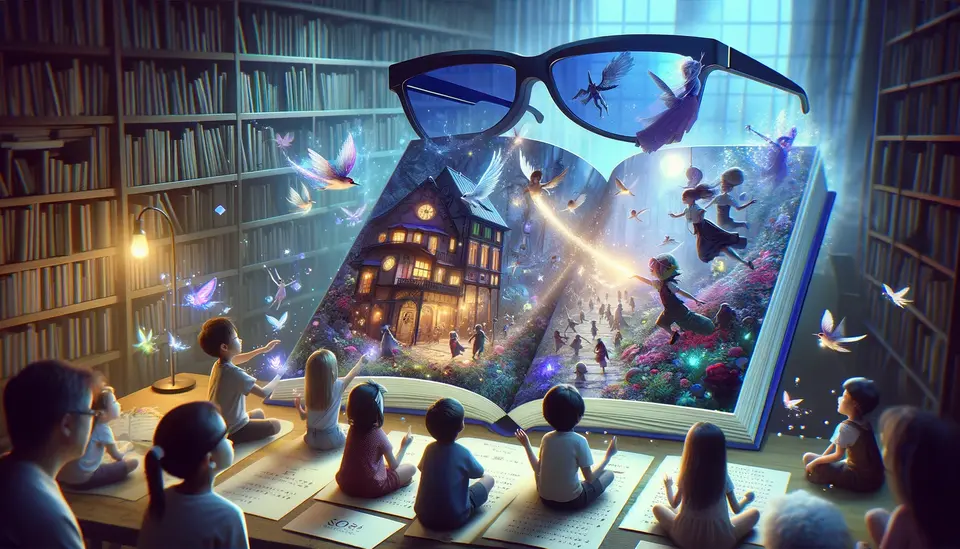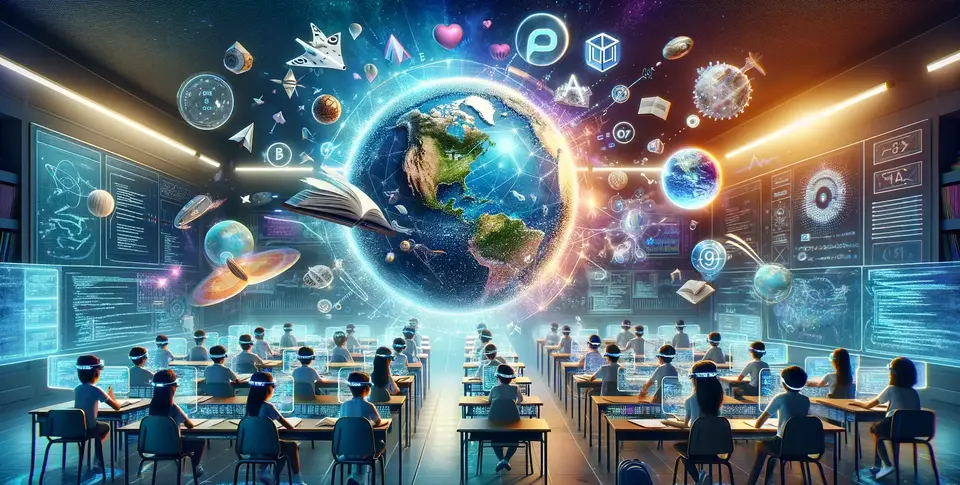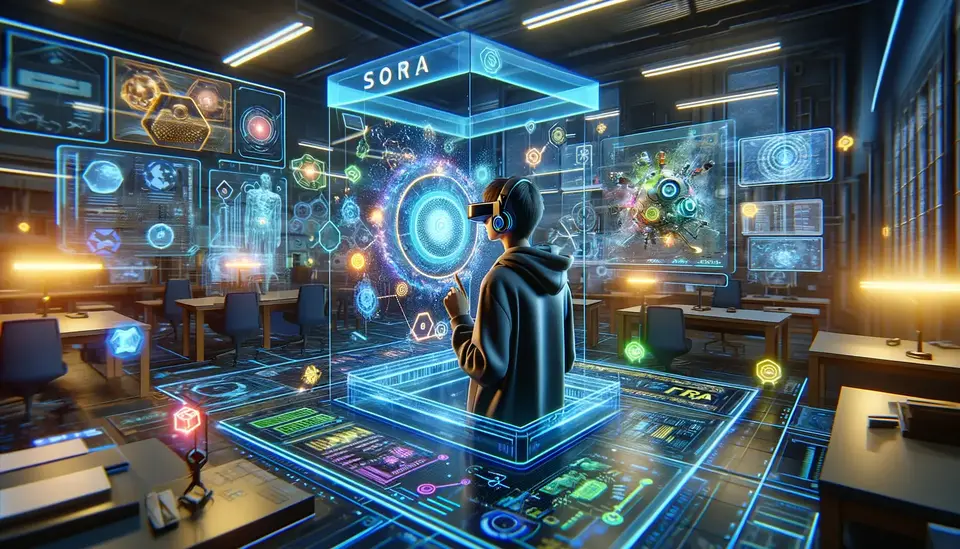The Future of Digital Art in Augmented Reality (AR) Through Sora
Posted on April 13, 2024 8 minutes 1620 words
Table of contents
Introduction
The landscape of digital art has been in a constant state of evolution, with each technological advancement offering new tools and mediums for creative expression. Augmented Reality (AR) has emerged as a significant medium, transforming the way we interact with art by overlaying digital content onto the real world, creating immersive experiences that blend reality and imagination. Enter Sora, a pioneering AI model developed by OpenAI, known for its unparalleled ability to generate realistic and imaginative scenes from textual prompts. This post posits that the integration of Sora’s advanced capabilities with AR technologies holds the potential to redefine the boundaries and possibilities of digital art, opening up new avenues for creative expression that merge the physical and digital realms in unprecedented ways.
Understanding Sora and Its Place in AR
Sora stands out for its ability to create videos directly from text instructions, making it a potent tool for artists and creators in the digital realm. This AI model can generate complex scenes that include multiple characters, specific motions, and detailed backgrounds, bringing to life scenarios that are vivid, dynamic, and richly textured. When considering Sora in the context of AR, its significance becomes even more pronounced. Text-to-video generation can transform AR experiences, allowing for real-time creation of dynamic content that interacts with the physical environment. This creates a technical synergy where Sora’s generated content can be seamlessly integrated into AR applications, enhancing the realism and immersion of AR experiences. However, there are challenges, including the need for real-time processing and spatial awareness, that must be navigated to fully realize this potential.
Revolutionizing Artistic Expression with AR and Sora
Early adopters of Sora within the AR landscape have showcased its transformative impact on artistic expression. Through case studies, we observe artists creating AR experiences that leverage Sora to generate content that interacts with real-world environments in real-time, adding layers of depth and interaction previously unattainable. Sora’s blend of realism and surrealism enriches AR spaces, allowing artists to craft experiences that defy traditional boundaries between the real and the imagined. This expansion of the AR palette opens up possibilities for more complex, dynamic, and interactive art installations. Artists can create AR experiences where digital elements not only coexist with but also respond to the physical world, engaging viewers in a dialogue between the seen and unseen, and challenging their perceptions of reality.
The Impact on Artists and Audiences
The integration of Sora with AR technologies represents a significant step toward democratizing the creation of digital art. By enabling artists to generate complex, dynamic scenes from simple text prompts, Sora lowers the technical barriers that have traditionally restricted digital art creation to those with specialized skills. This democratization extends to AR, where artists can now embed their creations in the real world, inviting audiences to experience art in their everyday environments.
The evolution of audience interaction within these AR spaces is profound. Traditional art experiences often position the audience as passive observers. However, AR, enhanced by Sora’s dynamic content generation, shifts this dynamic, turning observers into active participants. In these AR environments, viewers can interact with art in real-time, influencing and becoming part of the art itself. This interactive element not only deepens engagement but also personalizes the experience, as each interaction is unique to the individual.
For artists, the implications are transformative. The shift toward more engaging, immersive, and personalized art experiences encourages a reevaluation of the artistic process and the relationship between the artwork and its audience. Artists are now tasked with designing experiences that invite interaction and engagement, blurring the lines between creator, creation, and observer in exciting new ways.
Technical and Ethical Considerations
Integrating Sora with AR platforms presents several technical challenges, including ensuring spatial awareness and managing real-time processing of generated content. Achieving a seamless blend of digital art with the physical world requires sophisticated algorithms that can quickly process text prompts, generate relevant content, and accurately position it within the AR environment.
Beyond technical hurdles, ethical considerations also play a crucial role. The creation and distribution of AR art via Sora raise questions about privacy, as AR experiences often rely on real-world data. There’s also the potential for misinformation, as the line between real and generated content becomes increasingly blurred. Addressing these concerns involves developing robust guidelines for content creation, transparent data usage policies, and tools to clearly distinguish between real and AI-generated content.
Strategies to tackle these challenges include ongoing collaboration between technologists, artists, and ethicists to establish best practices for ethical AR art creation. Additionally, leveraging machine learning to improve spatial recognition and real-time processing can mitigate technical limitations, ensuring a more integrated and responsive AR experience.
Case Studies of Sora in AR
As we envision the integration of Sora with AR, while acknowledging that Sora has not yet been made publicly available, we can project the potential impact and innovative applications through hypothetical case studies. These speculative explorations aim to illustrate the profound possibilities that lie at the intersection of Sora’s AI capabilities and augmented reality, foreshadowing a future where digital art and real-world environments converge in unprecedented ways.
Futuristic Urban Artscapes: Imagine transforming cityscapes into dynamic canvases where historical narratives and futuristic visions coexist. Artists could feed textual descriptions of both historical events and speculative futures into Sora, creating AR layers that citizens can explore through AR glasses. This would not only redefine public art but also engage communities in interactive storytelling, blending the past, present, and future in a shared urban space.
Evolving Mural Projects: A visionary artist proposes an ever-changing mural that responds to environmental and social data. By inputting thematic prompts into Sora, the mural periodically evolves in AR, reflecting the current mood, weather, or social trends. This living mural becomes a mirror to the community, showcasing the potential of AI to create art that is not only interactive but also deeply connected to the zeitgeist.
Personalized AR Storytelling for Education: A startup envisions using Sora to revolutionize educational content for children. By inputting educational themes and narratives into Sora, personalized AR experiences are generated, bringing lessons to life in the student’s immediate environment. This method could transform learning into an immersive, interactive journey, tailored to each learner’s pace and interests.
Virtual Exhibitions with Global Reach: An international art collective explores the idea of a virtual exhibition where unrealized artworks are brought to life through Sora. Artists submit descriptions of conceptual pieces, which Sora interprets and renders in AR. Viewers from around the globe participate in an AR gallery walk, experiencing a borderless exhibition that challenges the traditional confines of space, accessibility, and artistic realization.
These speculative case studies reflect the immense potential of integrating Sora’s advanced AI with augmented reality, paving the way for new forms of art, storytelling, and communal experiences. While Sora remains under development and not yet available to the public, its anticipated capabilities inspire a future where creative expression and technological innovation merge, opening new avenues for artists and audiences alike to explore the boundaries of imagination and reality.
Future Directions and Possibilities
As we peer into the horizon, the evolution of Sora alongside emerging AR technologies holds immense promise for the future of digital art. Predictions center on Sora’s capabilities becoming even more sophisticated, with advancements in AI allowing for more nuanced and complex interpretations of text prompts, thus enhancing the realism and interactivity of AR experiences. This progression will likely pave the way for new mediums and forms of artistic expression, where the digital and physical worlds are not just overlaid but deeply intertwined, creating a new fabric of reality that is richer and more immersive.
The confluence of Sora and AR is set to birth unprecedented forms of art that transcend traditional boundaries, enabling experiences that are fully interactive, personalized, and dynamic. Imagine walking through an urban landscape transformed into a living canvas, where stories and art unfold around you in real-time, responsive to your presence and interaction.
Furthermore, the future landscape of AR art through Sora will be significantly shaped by community, collaboration, and open innovation. The role of artist collectives, tech communities, and cross-disciplinary collaborations will be crucial in exploring the full potential of these technologies. Open-source projects and platforms that facilitate sharing and experimentation will drive innovation, making the technology more accessible and allowing for a diverse range of voices to contribute to the evolving narrative of AR art.
Conclusion
The integration of Sora with AR technologies represents a watershed moment for digital art, heralding a future where art is not just viewed but experienced—where audiences are not mere spectators but active participants in a shared creative journey. This transformative potential extends beyond the novelty of technology, promising to redefine the essence of artistic expression, storytelling, and engagement.
Reflecting on the broader impact, it’s clear that the convergence of AI and AR has the power to democratize art creation, expand the boundaries of creativity, and foster deeper connections between art and its audiences. As artists, technologists, and enthusiasts explore this frontier, they are not just crafting new experiences but also inviting us to reimagine our relationship with art and the world around us.
Embracing the convergence of AI and AR for artistic innovation requires curiosity, courage, and collaboration. As we venture into this uncharted territory, the promise of creating and experiencing art in ways we have never before imagined beckons. The journey ahead is as much about discovering new technologies as it is about rediscovering what it means to be human in a world where the lines between the digital and physical increasingly blur. In this exciting new era, Sora and AR are not just tools but partners in our ongoing exploration of creativity, identity, and expression.

